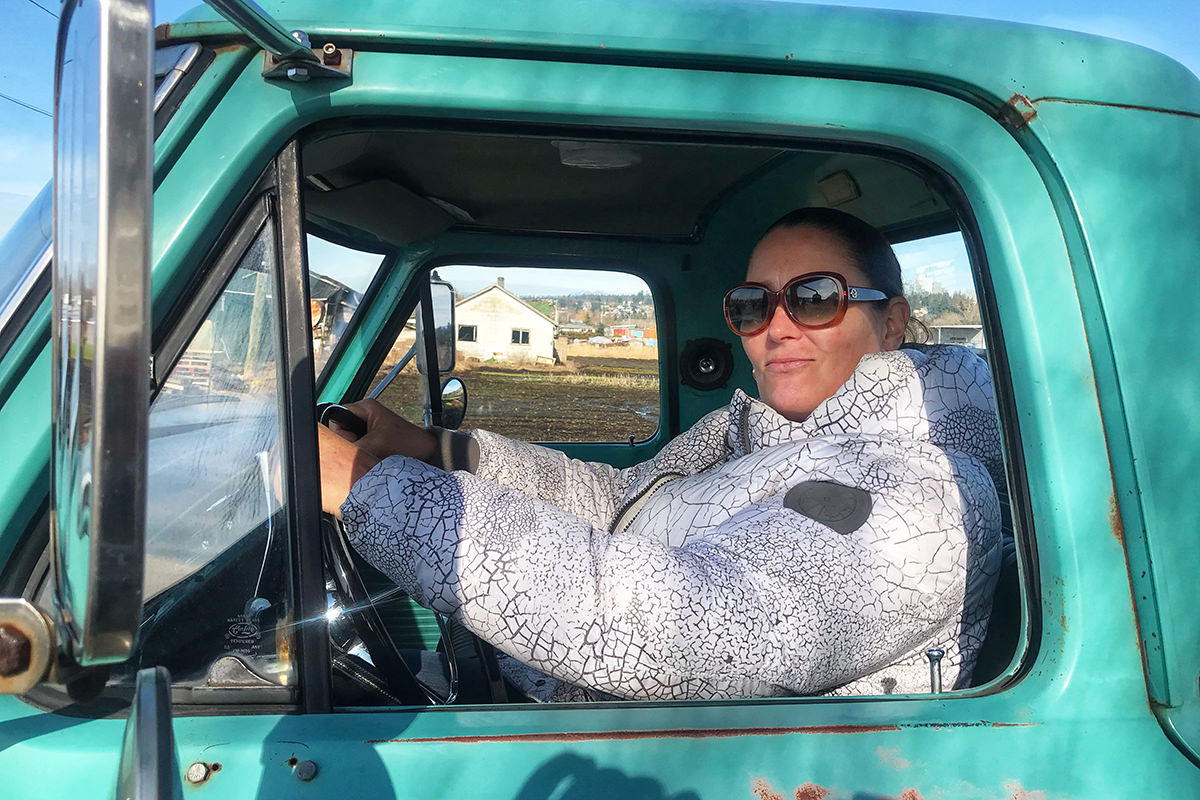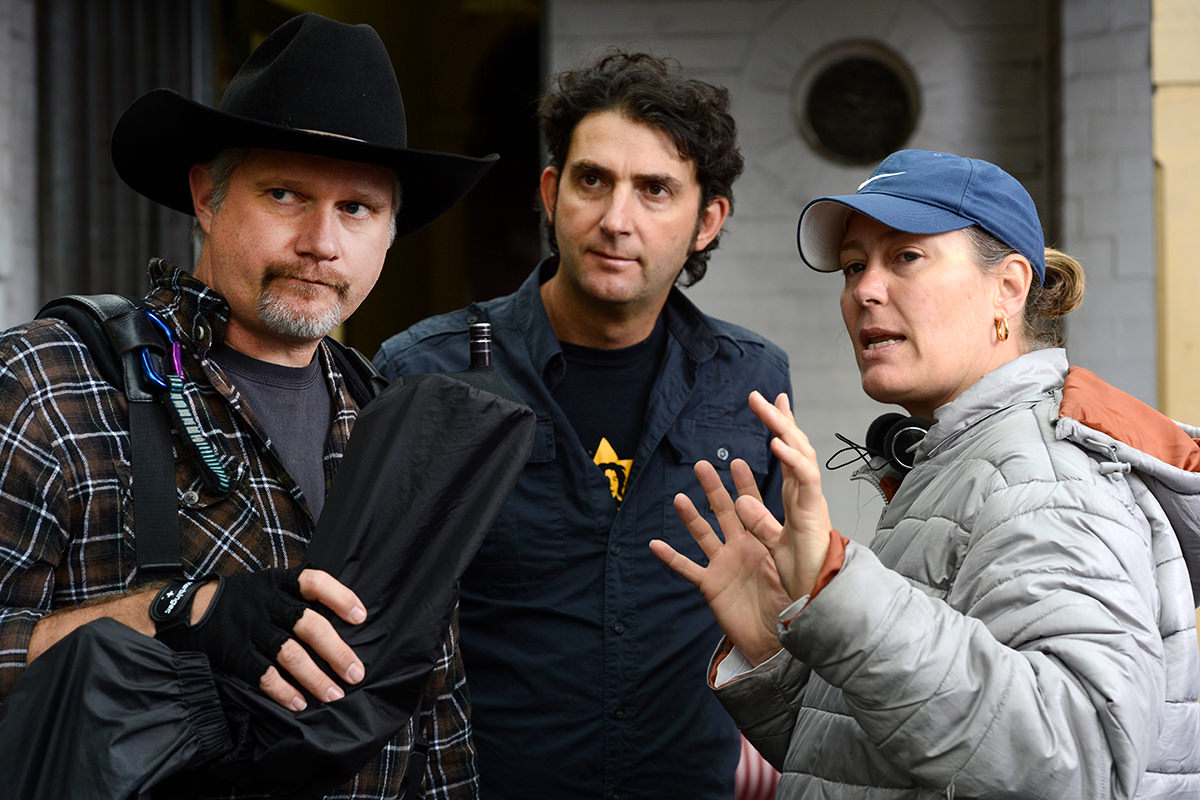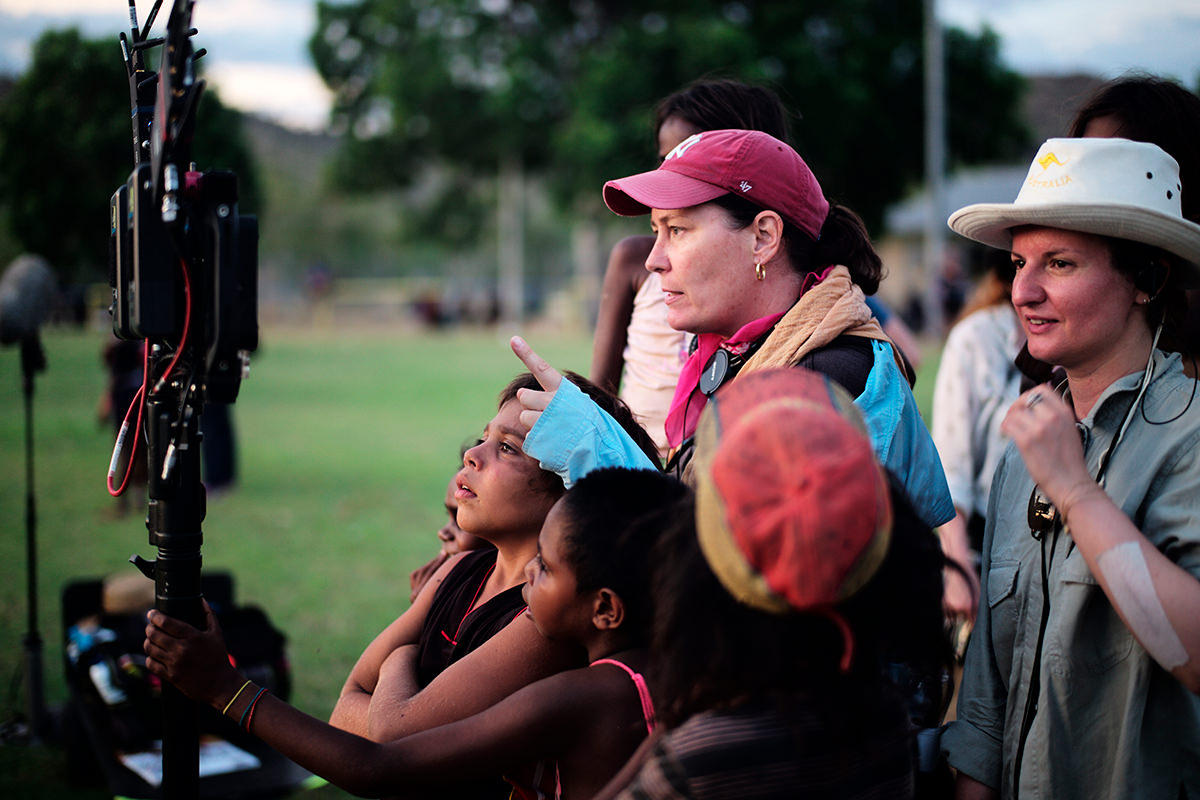Advice from Isolation: Catriona McKenzie on chasing the final 1%
Director Catriona McKenzie draws on everything from Kiki and Kitty to How to Get Away With Murder to talk expectations, jumping genres and being adaptable.
 Catriona McKenzie
Catriona McKenzie
As we #StayHome to help combat COVID-19, members of the Australian screen sector share their career learnings in the Advice from Isolation series. Subscribe to Screen Australia’s newsletter for additions to the series.
I was about to start my day filming Claws when they pulled the pin because of 'The Rona’. Ironically it was Friday the 13th. I got the last seat on the last flight back and have been hunkered down ever since. I’ve had time to reflect. What follows is my response to Screen Australia’s questions.
FIND A PROCESS THAT WORKS FOR YOU
I have a deep understanding of who I am and my creative process. I’m curious about the world, what makes us tick, and I love learning from awesomely creative people.
Understanding myself at a deeper level has made me a better filmmaker. So again while directing has its technical aspects, and we all have our process, for me it is all about chasing the final 1%. It involves digging deep into the beauty, emotion and inspiration of what it is to be human and that’s where I’m at as a filmmaker.
Holden HR
Those who know me, know I love restoring old cars. I have an old Holden HR ute that was a prop in a TV series. It was a rolling shell and I restored it, ‘resto-moded’ it and I use it as my daily driver. It looks original but it drives like a modern car. There is an intelligence in design and I enjoy the process of working that out. For me it is all about making it the best it can be. Sometimes we find cars have been designed and built with a level of thoughtfulness and sophistication that is beautiful to behold. I love finding those opportunities.
Directing television is a similar discovery of that design. The narrative engine, the characters and what drives them. What is the architecture of the script? I love to work out what the show is saying and find ways to elevate it. I really enjoy this discovery. The application of that understanding is found on set, through collaboration between DP, production designer, the editor and of course the incredible, remarkable amazing actors who grace our screens. Then there is the magic that happens when it all comes together.
As much as directing can be about problem solving, it is this process of discovery that leads the way.
As the director you lead the cast and crew, with an eye on the vision and meeting the schedule. That is what they need and expect. So I prepare, over prepare, plan, shot list, rehearse, collaborate with the crew. It is also my role to bring my taste and sensibility to the project: my point of view of the world.
But how do I hang onto that taste and sensibility in the trenches when the light is fading and everyone is exhausted? My answer is to stay attuned to that narrative engine, and most of all consider what the characters need and want. Listen, stay relaxed and in the zone.
That focused understanding needs to be present off set as well. Always know what you want and need to achieve each day. Trust yourself. Don’t place your trust in people’s differing agendas - hold onto your dreams.
Besides the creative there is the way I navigate the business side of this industry. I work with a lawyer versus an agent and have learnt I am my best asset. Don’t go into business with someone you don’t trust.
BEING ADAPTABLE IS KEY
It’s all about adaptation. I work across all genres from improv comedy to thrillers. Every show has its own personality and regime. Each show has its own inner logic and life.
But most of all it is the idea, regardless of the budget. Kiki and Kitty was packed with all things fantastic - smashing race and gender together like only Nakkiah Lui can do in a beautiful comedic world - where a vagina, The Vagina (Elaine Crombie), gets up and takes control!
There are shows that demand a scale to illuminate their inner world. The shows audience expect it. How To Get Away With Murder is a character-based series with super high production values. Directing a show like that allows me more toys: techno cranes, lights, Russian arms, lens etc. adding and allowing for unique ways to dig into what matters in the story and for each of the characters on screen. But after all that we just want to watch Viola Davis and the cast work their magic.
Budget can be nice. A few years back I was in Toronto directing a night scene. I’d asked for ten blocks of our inner city location to be wet down. We had 20 New York cabs driving around, 100s of extras. Production value for sure. But the focus remained on the characters and the story we were telling and that’s what it’s about.
But budget doesn’t always make it easier.
I recently turned up to film a demanding sequence. Overnight there had been a 3ft dump of snow. It was -5 degrees. The studio didn’t shut it down so we kept going. Massive cranes, lights, special FX’s for days. We had to finish this scene. The grips were slipping and sliding in the snowy mud; it started to rain; one actress was sick and fading fast. It was a logistical nightmare. It looks fantastic but all that scale and production value was a weight to carry. All the cast and crew were suffering and I was the one to lead them through it. Again it’s the story and characters that are the lens to find your way to the gold.
 Catriona McKenzie on the set of Redfern Now (Photo credit: David Dare Parker)
Catriona McKenzie on the set of Redfern Now (Photo credit: David Dare Parker)
AVOID BEING PIGEON-HOLED
I’ve just been drawn to what interests me. I work on projects that are important to me. I’m super interested in politics. I want to tell Indigenous stories - that’s extremely important to me. I love genre, especially sci-fi. But I’m also a bee keeper. I restore old cars and trucks. At the moment I’m reading about Zaha Hadid, the incredibly creative Iraqi–British architect. I’m the parent of an 11-year-old boy. When I find time, I dabble with online university courses. Before I became a filmmaker I was doing a Ph.D. When I met my biological parents, I made the choice not to submit it. But curiosity continues to drive me. I love to learn. I love to problem solve. My filmmaking increasingly reflects who I am.
Other takeaways:
- I watch a lot of films. A lot of TV.
- I always go to the very best filmmakers: Ridley Scott, Peter Weir, Tarkovsky, Satyajit Ray.
- I follow writers. How do they set up their story? How to they tangle with their dialogue. I love learning from these filmmakers.
- I listen to music.
- I cook.
- I read. A lot. More than the notes it’s the phrasing that makes it rise.
CHOOSE YOUR COLLABORATORS AND PROJECTS WISELY
I have a no arsehole policy.
I work with people I believe in. It took a while, but a few years ago I made a choice to work only with great people. People I trust. It’s about backing oneself. It’s been a valuable lesson in an industry that is built on insecurity on so many levels. I have a family and I’m determined to only bring good energy into my private life.
Having learnt all the technical stuff that goes with directing I rarely use that language anymore. I’m comfortable in my skin and I continue to collaborate with people who are about the work. It’s a feeling thing. A lens has a power that makes an actor ‘pop’ on the screen. It emboldens them. When you see it, it’s clear. I trust that creative feeling.
 Catriona McKenzie on the set of The Warriors
Catriona McKenzie on the set of The Warriors
HIGHLIGHTS AND LEARNINGS ALONG THE WAY
My first short film was Box; a low-budget short film with non-actors and a doco feel. Leading up to the Sydney Olympics there were a series of festivals and I was invited to make a short film for The Festival of Dreaming. I was a writer and I had an idea to tell the story of a boxer inspired by my family history. I wanted to use real boxers and the community of Redfern. We shot it on film and it screened theatrically and on ABC. What a great experience. It may have been Leah Purcell’s first film experience. I found this incredible boxer, Kevin Kunga Kelly. He had sensational on screen presence. We mixed non actors including Tony Mundine and others at a live boxing event and I love the authenticity it gave. The film won awards all over the world and that’s what kicked off my directing career.
I’d directed ‘dramedy’ before and written several comedy/satires that were never made so Kiki and Kitty was my first real comedy. It was super low budget so it was all about being creatively resourceful, smart and nimble. We all embraced improv on a tight schedule. Nakkiah Lui is so smart and her scripts reflect that in spades. Add Sylvia Warmer and Elaine Crombie to the mix and you have an awesome trio of smarts. No cranes or fancy toys: just great creative collaboration.
Bad Mothers for Channel 9 was a blend of drama with comedy. It was an opportunity to work with an awesome team: Steven Zanoski and Chloe Rickard are wonderful producers and really knew how to support Rachel Lang and Gavin Strawhan, the show’s creators/writers. It was a decent budget with the usual amount of toys to play with. The producers knew how to manage the scripts and that leadership had an on screen impact. It meant I could relax into the material. For me the icing on the cake were the actors. They were all spectacular. What a privilege. I feel very lucky to have worked with them all. Great fun!
How To Get Away With Murder. It was all about working out the DNA of the show and working with extraordinary talent. It was an enlivening experience. It was great to be part of this long running, prime-time USA show. It is a well-oiled machine and as a director you are a visitor to the set in a way. You are on set for eight days with the crew. Your job is to tell the story, have a clear vision, shoot the schedule and work with the exceptional actors. My script supervisor was Suzie Sax. She was a wonderful ally, she’s done the whole show and we collaborated very well. Find your helpers.
Mythic Quest for Apple TV. I directed the finale of this show, made by the guys from It’s Always Sunny in Philadelphia, which is the longest running comedy in the USA. They were the writers, producers and actors on the show. They really knew what they were going for in the writers’ room. They knew what they wanted to say and we had a good budget for the show. We had a plan. And then they started to improvise. It was so much fun being tuned in and staying light on your feet. Regardless of the budget, again it was the ideas and the actors (who are very bloody funny) that make the show.
What an eclectic article I’ve just written. What a tough gift The Rona is to have time to reflect on such things. And more than ever it’s clear to me how important it is that we continue to tell our uniquely Australian stories.

What to read next
The Stateless actor reflects on pivotal career steps and the lessons they taught him.
04 May 2020
Fayssal Bazzi